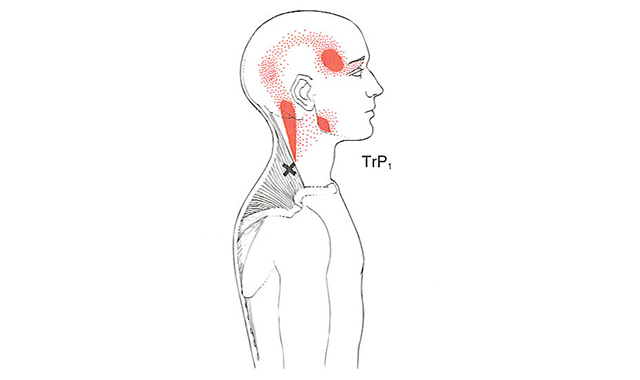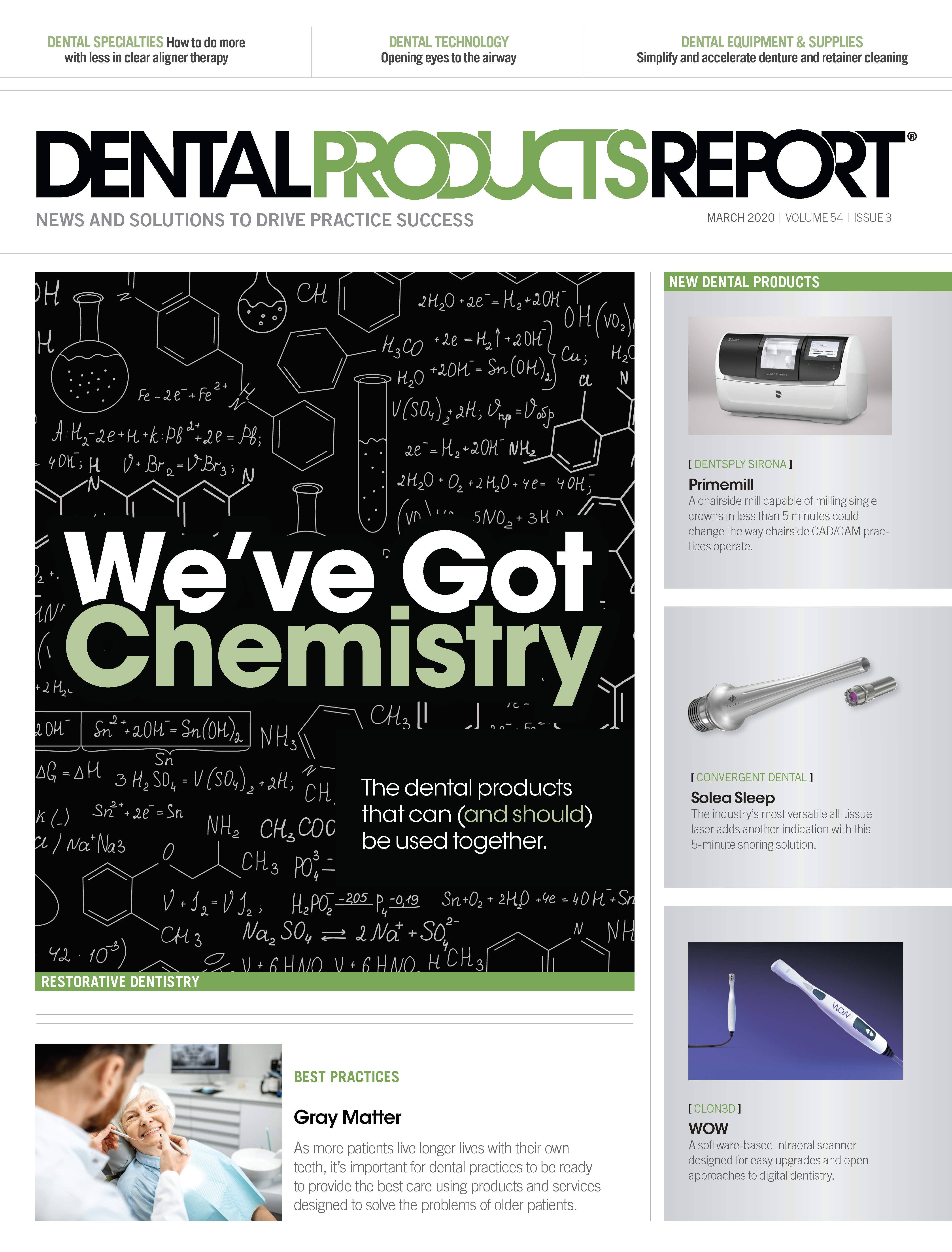Ergonomics: A headache behind the eye
Headaches can be caused by neck pain in one of the most-used muscles during the delivery of dental care.

Dear Bethany: I have been experiencing neck pain combined with a headache behind my eye that won’t go away with over the counter pain meds. I am wondering if this could be related to my ergonomics in the operatory?
Dear Doctor: Absolutely! The headache location you are describing is a referral pattern from trigger point #1 in the upper trapezius (Fig. 1). The upper trapezius is the most active muscle in the body during the delivery of dental care, therefore this is a common pain referral pattern. Trigger point #1 in the upper trapezius muscle can also cause pain into the neck.
If left untreated, these trigger points can lead to the development of a painful condition called trapezius myalgia. Symptoms include pain, spasms, or tenderness in the upper trapezius muscle, most commonly in the non-dominant (mirror or retracting) arm.
Treatment of trigger points
It is important to relieve trigger points as soon as possible to restore nutrient flow to the muscle, prevent muscle imbalances, and prevent compression on nerves. There are numerous approaches that medical professionals use to treat trigger points. However, self-treating your trigger points is an easy and practical option.
Preventing upper trapezius trigger points
1. Correct Patient Height: Position the height of the patient so your forearms are sloping only 10 degrees or so upward. Positioning higher than this often leads to shoulder elevation, especially when working between the 8 and 11 o’clock positions. Also, working with the shoulders on a tilted axis or the head turned to one side can lead to worsening of upper trapezius pain. Operators with short torsos may find that when they position their knees under the patient head or backrest, they have to elevate their shoulders when working. This problem is easily resolved with proper stool adjustment.
2. Use Ergonomic Loupes: Excessive forward head posture is commonly observed in the operatory and strains the upper trapezius muscles. Loupes with a poor declination angle forces the operator to assume a head tilt greater than 20 degrees-a posture that has been associated with neck pain. Ergonomic flip-up loupes will allow the most neutral, upright working postures. But beware: Some flip-up loupes can worsen neck pain.
3. Utilize Armrests: Supporting the arm weight is especially important for trapezius myalgia sufferers. Dentists who use armrests have been shown to have less pain than those who do not.
4. Perform Chairside Stretches: Sustained low-level contraction of the upper trapezius with few breaks greatly increases its susceptibility to ischemic pain. Without sufficient rest periods or dynamic movement, tension can accumulate in these muscles and, by the end of the day, you may be wearing your shoulders as “earrings” without realizing it. Frequently performing upper trapezius stretches can reduce tension and pain in these muscles.
5. Manage Your Stress: Your upper trapezius muscle is the most responsive muscle in the body to emotional stress, resulting in neuromuscular hypertension. The statically contracted muscle becomes ischemic and painful. Stress management strategies that target muscular pain are helpful in prevention.
6. Corrective Exercise: Training the upper trapezius muscle with heavy weight resistance is one of the most common exercise mistakes dental operators make. This can worsen the unique muscle imbalance to which dental professionals are already prone and cause neck pain. The upper trapezius muscle should be targeted with exercise that increases blood flow.
